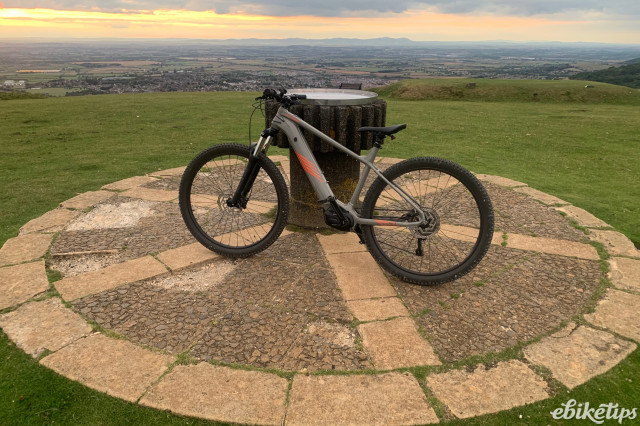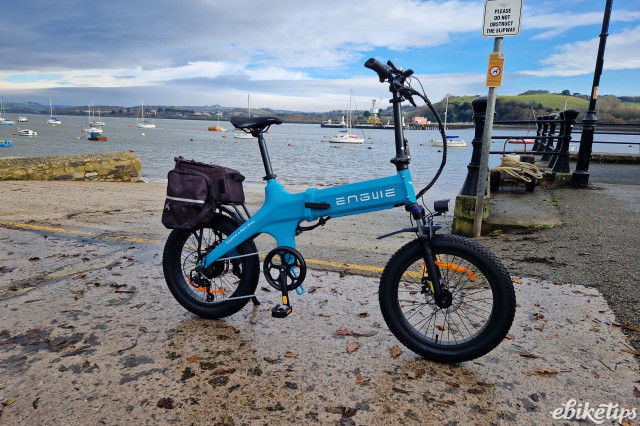Simon Clark, who was hospitalised in a serious car crash in 2019, explains how he simply would not have his current fitness, mobility or mental health if it weren't for his e-bike.
“That’s cheating.”
“Get a proper bike.”
“You’ll never get fit and lose the flab if you keep riding an e-bike.”
That’s great. Just what I need. More negative voices to rattle around my damaged brain; just waiting for the early hours of the morning to torture me with feelings of despair and self-hatred.
Luckily for me, the chorus of inspirational voices from the “proper” cyclists died out as I sailed up the rather steep Cotswold hill, leaving them to struggle and, in some cases, push their trusty steeds for the next mile or so.
Sadly, this was to become an all too familiar ritual as I rediscovered my love of cycling at the beginning of the Covid lockdown.
So how did I end up on an e-bike? After all, my childhood was spent tearing around the countryside on a Raleigh road bike. My friends all had BMXs or mountain bikes, but I loved that raw speed and the fact that I could jump on it and knock out mile after mile and barely feel it. This love affair wasn’t to last though. As soon as I turned 17, cars loomed into focus and I placed that wonderful bike carefully in the shed and, before I knew it, it was covered in junk until eventually it was lost to the mists of time.
Now fast forward to October 2019. I have a three-bedroom house in the Cotswolds, several thriving businesses and the love of my life. If you’d have asked me at the time, life couldn’t have got much better – which is of course what everyone says before things fall apart.
For me, this moment came when I was a front seat passenger in a serious car accident which put me in a coma and altered the course of my life. I suffered far too many injuries to list here, but the highlights were a traumatic brain injury, shattering both the top and bottom of my spine, tearing a two-inch hole in my aorta, breaking all of my ribs, shattering my sternum, puncturing my lungs and shredding my diaphragm.
Needless to say, I wasn’t supposed to survive. I ended up in a coma for nearly three months and when I eventually woke up, I was completely paralysed.
The doctors were at a loss as to how I was still alive.
For me though, being alive was just the first rung on the ladder. I was going to recover from this and not only recover, I was going to be fitter and stronger than I was before the accident.
After many months of incredibly painful and challenging rehab, I was walking limited distances but with next to no lung capacity, I was out of breath the whole time.
Which is how I came across the wonder of e-bikes.
A bit of assistance
It was a bit of a battle once I could get up and move around to even convince the physios that an e-bike would even work – especially as when I started I didn't have the strength to lift the bike. Someone would have to prop it, hold it and help me lift my leg over - only for me to then discover that I couldn't turn the pedal with the motor turned off. With dogged determination, I figured out I could move if I had the motor turned on high, but the gear changes would make me wobble and fall off.
My bike is a Cannondale Trail Neo S2 to which I added a dropper seat post. At this point, if I came to a stop at any point with the seat still raised, I didn’t have the leg strength to support my weight at full extension and so would just topple over. The dropper allows me to raise and lower the seat during a ride, so I can place both feet on the ground at the same time and this saves collapsing to the floor.
Fortunately (or unfortunately if you were one of my therapists), I could see the base of Cleeve Hill from my front door. I would look up to that hill every day and dream of being able to walk up there again. I’d always loved mountains and high places. For me there was something safe and comforting about mountains.
One day, while looking up at Cleeve hill, I decided I was going to ride to the top of it. For context, it's the highest point above Cheltenham with nearly five miles of consistent incline.
And I couldn't yet get to the end of the road.
The recovery aid
This is why the e-bike is such a good tool for disabled people or those of us recovering from injuries. It acts as a great recovery aid, helping with the hills and when you stop pedalling, it will coast to a halt just like any other bike.
Thankfully e-bikes are much more popular now, but listening to comments about how the motor was doing all the work became increasingly frustrating. Depending on your circumstances and mobility, it's also absolutely not true. What it does is do is take enough of the sting out of pedalling to make cycling accessible to those of us not able to use a traditional bike.
> Are electric bikes cheating?
For me, the most truly wonderful aspect of riding an e-bike was that I could push my heart rate up to a suitable level and sustain that rate for a period without wearing out or injuring my muscles and joints. It was like going for a hydrotherapy session, but with much better views, motivation and fresh air.
I am nothing if not determined and because the bike can actually help with the work, I knew my goal was obtainable. It took two months of daily attempts and a lot of the time it felt like climbing Mount Everest, but one grey and cloudy day I finally reached the top. I stared across the valley, watched the clouds part over the Malvern Hills and saw sunlight hit the top of Worcester Beacon, nearly 32 miles away.
Next challenge accepted: to ride from the top of Worcester Beacon to the top of Cleeve Hill. How hard could that be?
> Buying an e-bike: a beginner's guide to electric bikes (+ video)








